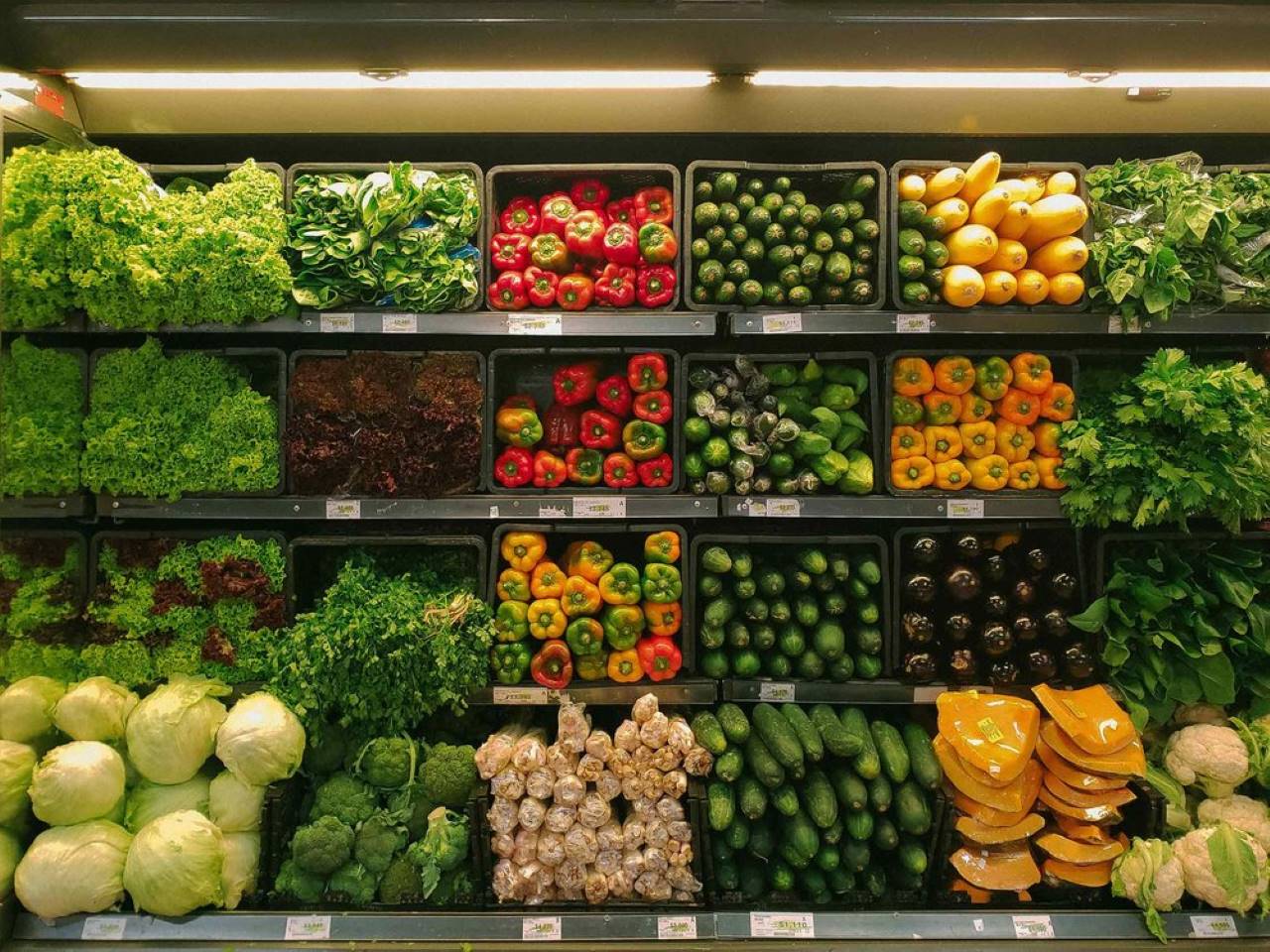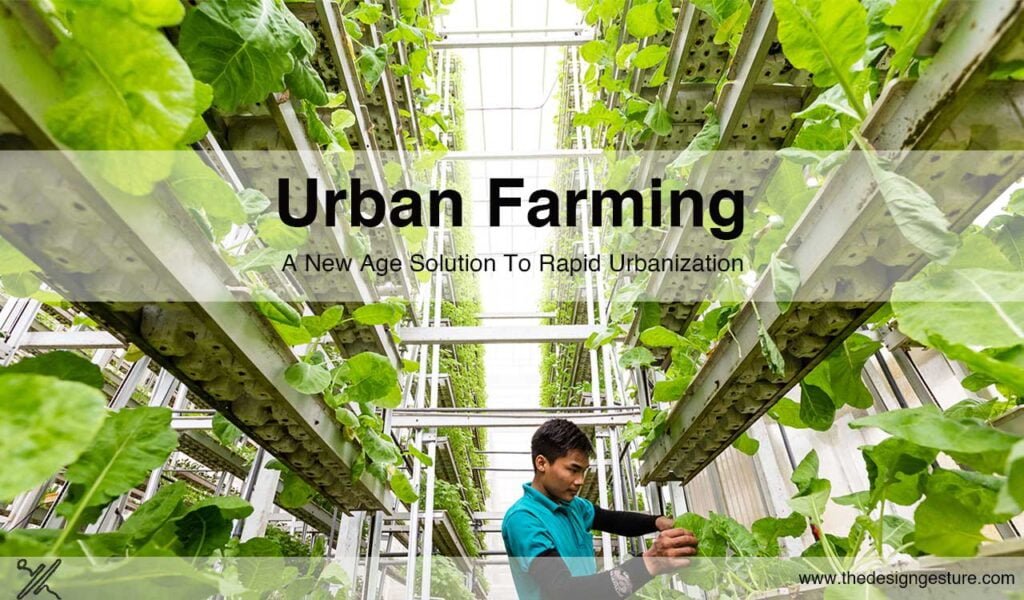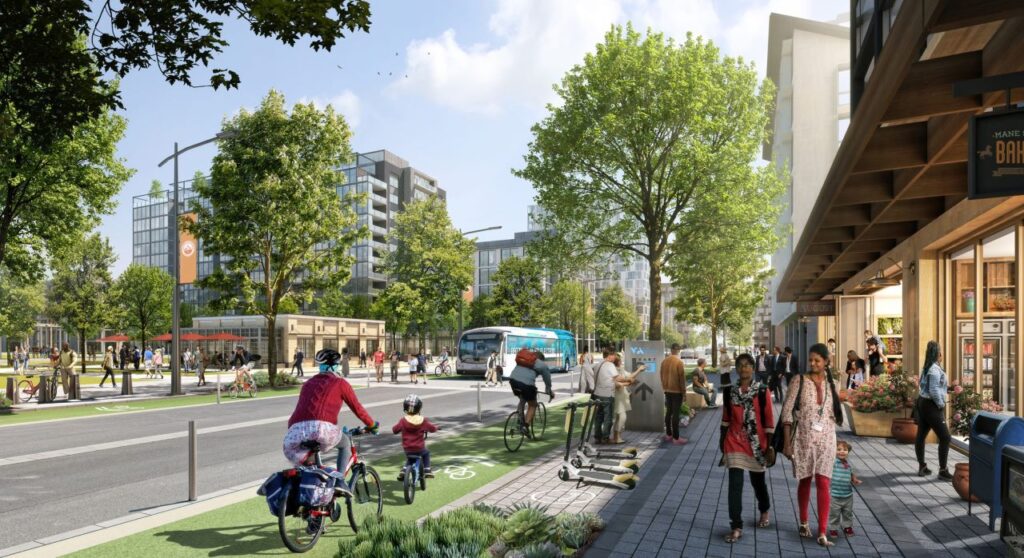Extreme natural disasters are becoming more common all around the planet. Floods, hurricanes, and sea-level rise, according to numerous studies, might affect 800 million people worldwide by the middle of the century, costing cities $1 trillion every year. This means that, in order to protect the city and its inhabitants, it is critical to address urban farming or urban vulnerability as soon as possible.
Given this context, many urban design projects have incorporated nature-based solutions (NBS) to enable sustainable ecosystem management in order to address various environmental concerns. These solutions can help to reconnect people with nature, reduce air pollution, increase thermal comfort in cities, lessen the impact of urban heat islands, and control storm water runoff, among many other advantages to the environment and to people’s physical and mental health. NBS can help with innovative designs that are less expensive than typical alternatives.
Table of Contents
Production systems and cultivation techniques
Lack of soil fertility, sufficient rural and urban land area, and agricultural sectors’ great distances from urban centres all pose obstacles and opportunities for urban agriculture development. As a result, besides traditional soil-based growing techniques, several soilless techniques are used.
Soilless cultures and hydroponics
Soilless culture is a method of growing plants in the absence of soil, utilising inert media such as rock wool, clay pebbles, or coconut fibres and a fertiliser solution. Soilless cultures are the most essential cultivating methods for optimal greenhouse production in horticulture. The presence and properties of substrates and containers, vertical or horizontal system, location like greenhouse, garden, integrated into the building, how the nutrient solution is administered to the plant through dripping watering, immersing in stagnant solution, or mist spray, and type of water circulation are the criteria for classifying soilless cultures (open or closed systems).
Vertical farming
Vertical farming is a farming technique in which living creatures like animals, plants, fungus, and other forms of life are artificially stacked vertically above each other for food, fuel, fibre, and other products or services. Vertical farming is being included in the production of fresh vegetables in cities. Because they are less reliant on land resources, these systems are particularly efficient in terms of land utilisation.
Urban Farming in several countries
Urban farming is becoming more popular in many places throughout the world because of private or government initiatives. For example, the city of San Francisco is providing tax exemptions to encourage cooperative urban gardening on vacant lots. In 2014, five rooftop community vegetable gardens on top of train stations in Tokyo were opened. Independent initiatives led by retirees in Barcelona produced enormous vegetable gardens in abandoned places.
Subirrigation
Subirrigation can be used in both the raised beds and the vases. It’s also known as infiltration irrigation, and it’s an irrigation system in which water is kept in a reservoir beneath the plant, and only the amount needed is pulled through the roots. This technique is great for regular travelers because it provides plants with autonomy for several days, if not weeks.
Pots with this system are already available on the market, and there are various tutorials on the internet on how to build a raised bed with irrigation using pipes and hoses.
Aspects to take into consideration
Area

When planning a garden, leave room not only for planting but also for storing materials and tools, as well as a compost bin.
Sun
Healthy vegetable growth causes a lot of light. It is suggested that you get at least 7 hours of sunlight per day, preferably 11. Some plants can thrive in less-than-ideal conditions, so do some research and see which ones will thrive in your current situation.
Water
Vegetables, too, require a lot of water to thrive. Ascertain if the location has access to high-quality water in sufficient quantities.
Drainage

Soaked soils can stifle plant growth and encourage disease outbreaks.
Winds
Strong and cold winds are not tolerated by even cold-adapted plants. If the land does not have a windbreak, try to create one by planting shrub species.
Green Corridors, Colombia
The city of Medelln, Colombia, has converted the verges of 18 roads and 12 streams into a green paradise during the last few years. Green Corridors is a project that involves planting trees along major thoroughfares in order to reduce the effects of urban heat islands, which are mostly caused by the overuse of concrete and asphalt.
For instance, the Avenida Oriental, one of the city’s main thoroughfares, was reconstructed with nearly 2 kilometers of paving on the pedestrian island and sidewalks replaced with gardens. Over 600 trees, palms, and thousands of smaller plants have been planted, allowing native wildlife to return to the area. Many various birds, such as parakeets and parrots, as well as butterflies and even squirrels, may now be seen flying through the city.
The effort concentrated on locations with the least amount of green space and was successful in lowering air temperature by more than 2°C. The Kigali Cooling Efficiency Program supported the Green Corridor project, which earned the 2019 Ashden Award for Cooling by Nature.
Garden Conservatory Seoul, South Korea
The world’s most famous luxury brands are represented in the Hyundai Department Store Mokdong in Seoul. While the shopping areas below test one’s senses, the upper floor provides a respite. The simple “Glass House Garden Room” provides shoppers and tourists with a relaxing environment. It may host events and exhibitions and acts as the entrance level to the adjacent residential towers.

Embedded on the floor are islands of green plants that visually break up the expanse. Above each island, a swarm of plant-friendly LED lights has been installed to enhance both human and plant well-being.
The surrounding roof terrace on the seventh storey in Mokdong has been extended into the inside; sunshine reaches the space only through the side windows. Although the ceiling is designed to look like a greenhouse roof, the panels are lighted artificially. The actual ceiling above is flat and dark, with no light coming in. As a result, it was vital to create a lighting solution that promotes the healthy growth of plants while also improving human well-being.

To minimize overstimulation and generating a stressful growing environment for the plants, LED chips with reduced red-light components were employed. The lighting levels were chosen to satisfy the demands of the plants while minimizing glare for visitors.
Green Agora Pavilion
The Green Agora, designed as a community pavilion for discussions about nature, food, and farming, allows native plants to grow on its modular aluminium construction and steel meshes. The Green Agora is a statement as much as a model. The initiative is positioned along the convergent trajectories of crisis and lifestyle: post-COVID realities foster rising anxieties about food security and a desire to organically control wellness, while sustainable living currents continue to rise.
Green Agora is a model for post-pandemic survival in decentralised, self-sufficient communities. The Green Agora encourages local and participatory food production in 15-minute cities by being adaptable, lightweight, and quickly deployed to many areas. Green Agora is an urban agricultural infrastructure that also serves as a civic nexus, thanks to its modular design and modest footprint.
Tangshan Organic Farm

The project is in farmland on the outskirts of Tangshan’s Guye district. There are villages and dwellings strewn about. The land is rectangular and flat, with a total size of 6000m2. The building’s main purpose is to serve as an organic food processing workshop, with raw materials coming from all over the country, being gathered, processed, and packed here, and then being sent to other locations as finished products.
The design is inspired by traditional courtyard building; the initial idea is to build a magnified courtyard house, a workplace full of natural atmosphere and flexibility, a workplace that is self-contained and forms a corresponding relation with the surrounding broad and flat field.
Material Storage, the Mill, the Oil Pressing Workshop, and the Packing Area are all contained within four enclosed, largely self-contained houses. The Grain-Sunning Ground is located in the inner courtyard, which is surrounded by a handy work cycling route. The outdoor corridor that connects the four areas and serves as a path to the food processing workshop forms the building’s perimeter. The centre courtyard stretches out randomly around the building, topologically forming a multi-layered courtyard space that addresses the need for natural ventilation, lighting, and views in a workshop while retaining a high level of internal and external space quality.
The Impact of Food Production on the land
Early humans were mostly nomadic, travelling from region to region in search of food and water according on the season. Cultivation techniques and livestock farming were found, allowing groups to establish permanent settlements, and this form of social organisation altered. Agriculture’s advent as a human practise led in the occupation and change of the natural environment in an endeavour to cultivate and harvest all of the resources required for sustenance from the soil. Agriculture was the foundation of the ancient civilizations.
We are seeing tremendous landscape interventions to extend productive regions, yet at the same time, we are seeing an increase in the number of people experiencing food insecurity.
Growing space typologies and continuous productive urban landscapes
Agriculture is time and space constrained: plants and animals grow in a specific location and at a specific rate. As a result, locating space in cities and city-regions is essential for urban farming. While some of these sites are well known, such as conventional farming land, allotment gardens, or family gardens, others may have the potential for permanent or temporary urban farming.
Risks of air pollution and agronomic issues on urban farming
Pollution issues associated with urban food farming, as well as an awareness of food production in open city settings, can be integrated with food safety concerns and pollutant content in food items. Although there are a few papers on the subject, further research is needed to properly comprehend the dangers.
Urban agriculture is bound to develop and attract public and political attention as people become more aware of the environmental implications of food production and transportation, as well as the origin and security of the food they consume. Bringing food production closer together is pedagogical as well as sustainable. However, because of the tiny size and other constraints, cultivating food in cities differs from traditional farming in some ways.
Urban gardens can be found in a variety of locations and scales, including window sills and balconies, slabs and abandoned lots, school courtyards, public parks, and even unusual sites like subway tunnels. They can also be communal or private in nature.
In practice, architects and urban farmers work in quite diverse ways to integrate agriculture into the urban environment. Architects frequently create unfeasible vertical farming and urban agriculture concepts that neglect the reality of successful farming.
When developing urban farms, however, agriculturalists and entrepreneurs frequently overlook major design, aesthetic, and social integration opportunities. Agriculture and architecture are combined in agritecture, allowing urban farms to be both practical and well-designed at the same time.




